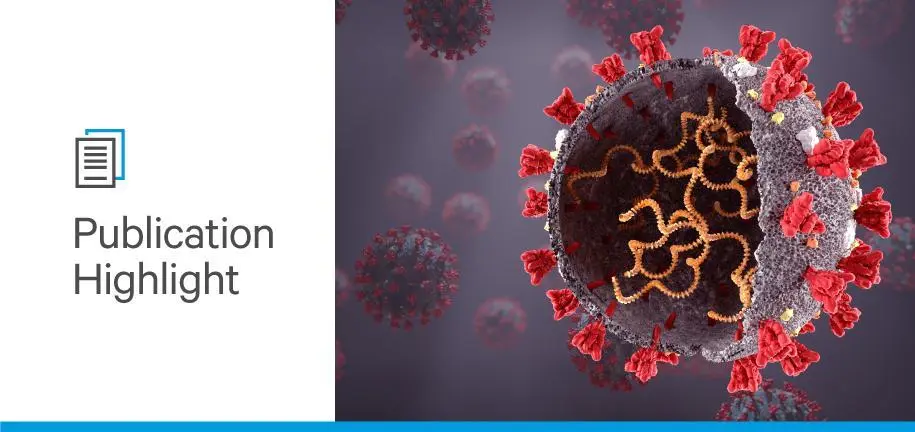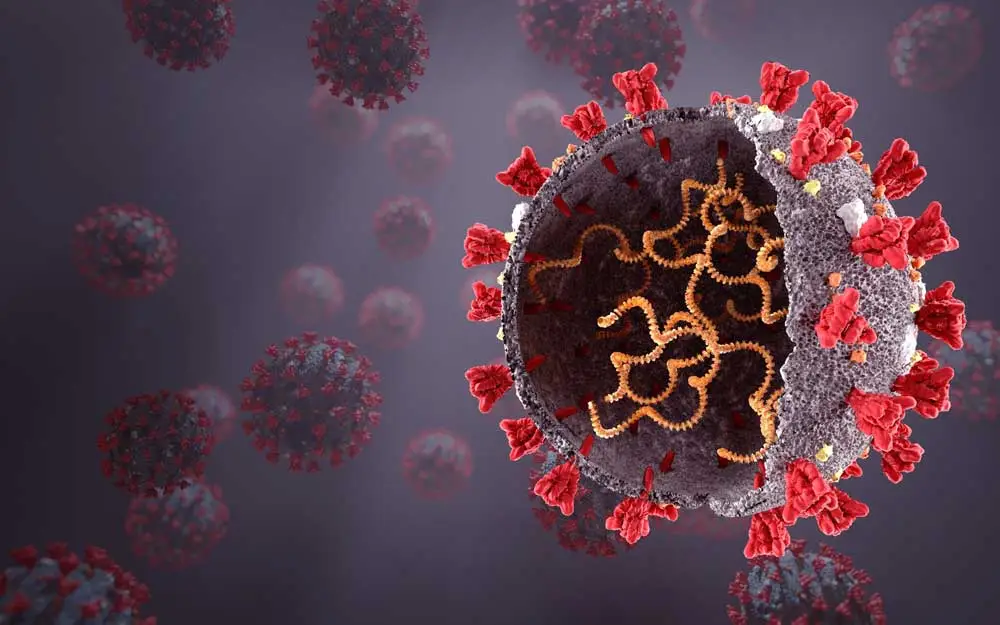
Vector Laboratories is closed for the President’s Day on Monday, February 19th. We will be back in the office on Tuesday, February 20th.
We will respond to emails upon our return. Have a wonderful day.
Menu
Vector Laboratories is closed for the President’s Day on Monday, February 19th. We will be back in the office on Tuesday, February 20th.
We will respond to emails upon our return. Have a wonderful day.


To expand our understanding of cross-reactive antibodies for coronavirus, researchers characterized monoclonal antibodies from a recovered SARS-CoV donor (1). By identifying non-neutralizing coronavirus antibodies and characterizing their effector function, they hope to further their ultimate goal—the future development of vaccines that are broadly protective against multiple coronavirus strains.
Antigen Purification
To identify cross-reactive antibodies to coronavirus S proteins, recombinant soluble protein antigens were prepared using LIBRA-seq (linking B Cell receptor to antigen specificity through sequencing). LIBRA-seq is a next-generation single cell sequencing–based tool for mapping for B-cell receptor (BCR)– antigen binding interactions using recombinant antigen-oligonucleotide conjugates (2). HIV-1 trimer antigens, from a gp140 variant, were used as negative controls. Cells were purified and run over an affinity column of agarose bound Galanthus nivalis lectin, which binds mannose-specific HIV glycoproteins. The column was washed with PBS, and the antigen was eluted with 1M methyl-a-D-mannopyranoside.
DNA-Barcoded Antigens
LIBRA-seq uses barcoded DNA oligonucleotides that are conjugated to each antigen, allowing screening of single B cells from a SARS-CoV-infected subject against an antigen panel. A bioconjugation kit utilizing the SoluLINK® technology was used to prepare unique antigen-oligonucleotide conjugates for the antigen screening library. Researchers used oligonucleotides that possessed a short antigen DNA barcode, a sequence capable of annealing to the template switch oligo. 5′amino-oligonucleotides were conjugated directly to each antigen using a Protein-Oligonucleotide Conjugation Kit. The oligonucleotide and protein were desalted, then the amino-oligonucleotide was modified with the 4FB crosslinker, and the biotinylated antigen protein was modified with the NHS ester S-HyNic. The 4FB-modified oligo and the HyNic-modified antigen were mixed together, resulting in a stable bis-aryl hydrazone bond between the protein and oligonucleotide. They determined the concentration of the antigen-oligonucleotide conjugates. The HyNic molar substitution ratio (MSR) of the antigen-oligonucleotide conjugates, calculated as the number of HyNic linkers per protein, was analyzed using a NanoDrop spectrophotometer. Excess oligonucleotide was removed from protein-oligonucleotide conjugates, which were verified by silver staining in SDS-PAGE.
LIBRA-seq of SARS-CoV donor
Peripheral blood mononuclear cells (PBMCs) from a recovered SARS-CoV donor were stained and mixed with DNA-barcoded antigens and other antibodies, and then antigen-positive B cells were enriched by fluorescence-activated cell sorting (FACS). DNA-barcoded antigens, which were conjugated by the Protein-Oligonucleotide Conjugation Kit, were added to B cells stained with various fluorophores. After B cells were sorted by FACS, investigators determined the LIBRA-seq score for each antigen in the library for every cell. They applied LIBRA-seq from the cells and identified a panel of cross-reactive antibodies that recognized spike S antigen from multiple coronaviruses: SARS-CoV-2 and SARS-CoV. Subsequent bioinformatics processing involved sequencing and analysis of antigen barcode libraries.
Competition ELISA
Competition ELISA determined whether antibodies targeted overlapping epitopes of SARS-CoV-2 and SARS-CoV. After addition of non-biotinylated competitor antibody to the well, biotinylated antibody was incubated and detected with streptavidin HRP and TMB substrate. Certain antibodies bound to the S1 or S2 subdomains and S2-directed antibodies competed for binding to S in both coronaviruses. The cross-reactive antibodies targeted diverse epitopes in ELISA: S2 spike subdomain, N-terminal domain (NTD) and receptor binding domain (RBD) in S1 subdomain. Almost none of the antibodies showed autoreactivity against tested antigens, indicating that they target diverse epitopes on the S protein.
Fc effector functionality of cross-reactive antibodies was determined by antibody-dependent cellular phagocytosis and antibody-dependent cellular trogocytosis. Antibody-dependent cellular phagocytosis activity was confirmed against SARS-CoV and found to be highest in an RBD-reactive antibody. Four non-neutralizing antibodies mediated trogocytosis, defined as intercellular transfer and nibbling of membrane fragments, which was the first time that this phenomenon was observed in SARS-CoV-2-specific antibodies. Trogocytosis is essentially partial phagocytosis, in contrast to complete engulfment of a large molecule (3). As a result, different Fc effector profiles were determined within the panel of cross-reactive antibodies.
An in vivo murine infection model was used to characterize the Fc effector function of two antibodies, which were tested for prophylaxis using a mouse-adapted virus strain (SARS-CoV-2 MA). Since no difference in viral load was found between treatment and control, researchers increased the viral dose in a more stringent challenge model. This time, they found mice had the highest survival rate with an RBD-reactive antibody compared to other treatment groups. This may be attributed to its high phagocytic activity against SARS-CoV-2 and SARS-CoV. Surviving animals had reduced hemorrhagic pathology scores in their lungs. This limited data suggests that cross-reactive antibodies could be used as prophylaxis against coronavirus infections.
Additional characterization needs to be done on cross-reactive antibodies for current endemic coronaviruses. Further research on Fc effector function, such as antibody-dependent cellular cytotoxicity (ADCC), is needed to profile these non-neutralizing antibodies for protection against disease. After studying dosing of these antibodies as prophylaxis in a murine model, the next step would be to characterize in vivo function in humans for therapeutic applications. To prepare us for future outbreaks, could these cross-reactive antibody epitopes be potentially used as targets for pan-coronavirus vaccines?
For more information on application and uses of bioconjugation, check out our Bioconjugation Resource Guide.
References





Stay in the Loop. Join Our Online Community
Together we breakthroughTM

©Vector Laboratories, Inc. 2024 All Rights Reserved.